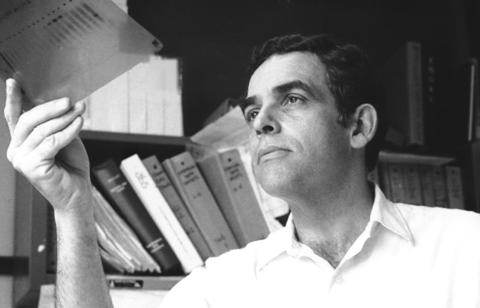Pioneering Geneticist Leder Mourned

Dr. Philip Leder, among the world’s most accomplished molecular geneticists, died on Feb. 2 at age 85. His work with Nobel laureate Dr. Marshall Nirenberg—which definitively elucidated the triplet nature of the genetic code and culminated in its full deciphering—helped set the stage for the revolution in molecular genetic research that Leder himself would continue to lead for the next three decades.
Leder’s scientific career at NIH and later at Harvard brought forth breakthroughs in genetic engineering, immunology and cancer research. Career highlights included the development of the first recombinant DNA vector system to meet specified safety standards, which he used to clone the gene for globin (the first cloned mammalian gene), and a series of experiments involving the c-myc gene and Burkitt’s lymphoma that proved that the deregulation of a normal gene can cause cancer.
Leder first came to NIH in the 1950s as an undergraduate intern in Dr. Martha Vaughan’s lab in the National Heart Institute (NHI). Upon receiving his medical degree from Harvard Medical School in 1960 and doing a residency at the University of Minnesota Hospitals, he returned to NIH in 1962, this time as a postdoctoral fellow in the Public Health Service and working in Nirenberg’s laboratory in NHI’s section of biochemical genetics.
In a 2012 interview with the American Society for Biochemistry and Molecular Biology, Leder described the early 1960s at NIH as the most exciting moments of his life. “I would go to bed thinking about the next day’s experiments and then jump out of bed in the morning and rush to the laboratory,” he said. “I stayed late at night. It was a lot of work, but the intellectual excitement was enormous.”
Leder joined the Weizmann Institute in Israel as a visiting scientist in 1965 and 1966; returned to NIH as a research medical officer in the National Cancer Institute from 1966 to 1969; became head of the section on molecular genetics in NICHD’s Laboratory of Molecular Genetics in 1969; and then rose to chief of that lab in 1972.
Leder taught a course on DNA replication, transcription and translation at NIH for the Foundation for Advanced Education in the Sciences. This was brand new science and the course was invariably packed. He was a chairman of the FAES department of chemistry, FAES vice president from 1970 to 1971, and FAES president from 1971 to 1973.
In 1980, Leder left NIH for Harvard Medical School, where he was founding chairman of the genetics department, a position he held until his retirement in 2008. He also became a senior researcher at the Howard Hughes Medical Institute in 1986.
Leder was recognized for his achievements with the Lasker Award (1987), the National Medal of Science (1989), the Israeli Harvey Prize (1983), the Dutch Heineken Prize (1990) and election to both the National Academy of Sciences and the National Academy of Medicine. His research supported Nirenberg’s Nobel Prize in 1968, and he was a guiding force for Dr. Tasuku Honjo, his NIH postdoc in the early 1970s, who would win a 2018 Nobel Prize for cancer therapy.
Leder is survived by his wife of 60 years, Aya Leder; his children, Micki, Tani and Ben; and 8 grandchildren.
